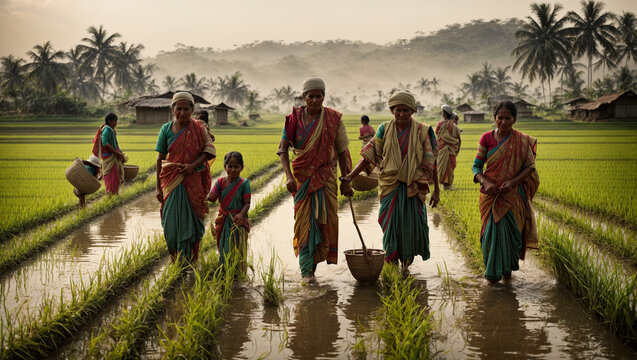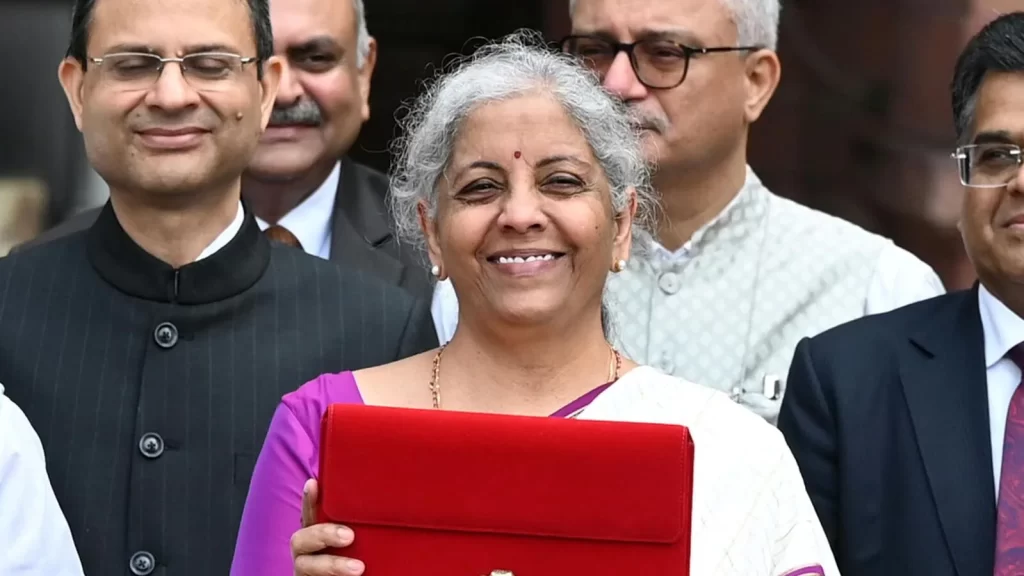The new Union Budget 2024–25 was presented by our honourable Finance Minister, Smt Nirmala Sitharaman, on July 23, 2024. The goal of the budget is to pave the way to ‘Viksit Bharat,’ a developed India, by 2047.
Let’s explore the promises, implementations, and potential consequences of this budget on the sector that is associated with the livelihood of most Indians: agriculture and its allied sectors.

It is no secret that there are issues in this industry caused by uncertain monsoons, crop failure, pests, lack of storage and transport facilities, and a lack of credit facilities, among other issues. This budget seeks to remedy some of these issues with an increase of 4.5% in the allocation of this sector compared to the last year’s allocation.
The policy updates in agriculture come under the following sub-points:
Upgrading agriculture research:
The Government of India will provide funding to encourage an upgrade in the setup of agricultural research and technology to create more climate-resilient and productive crops. This financial aid will also be extended to the private sector to ensure that the best of India helps create better varieties of crop seeds that will ensure that our crops are successful despite threats of climate change and global warming. Domain experts from the government and private industry will oversee this research revamp. This research will help improve farming outcomes for farmers by creating better crop seeds and also surveying soil, fertilizers, pesticides, water sources, and climatic conditions required for good farming. This research also holds the potential to find new varieties of seeds and climate technology that can be patented and exported to the global economy. The amount of ₹ 9,941.09 crore is allocated to the Department of Agricultural Research and Education for this purpose.
Releasing new crop varieties into the market:
The procedure for creating, testing, and monitoring new crops is a long and tedious task for agricultural researchers to check and optimize the characteristics and resilience of crops before they are released to the public for sale and use in India. As a consequence of this rigorous research, 109 new, high-yielding and climate-resilient varieties of 32 fields and horticulture crops will be released for cultivation by farmers, as announced in this budget presentation.

Organic Farming:
The sector of natural and organic farming is part of the sustainable growth and development shift in purchasing habits. To enable and empower our Indian farmers in this changing farming landscape, the government will initiate 1 crore farmers across India into natural farming, along with its certification and branding, in the next two years. The accreditation of the same will create more confidence among farmers and help their crops be procurable by larger corporate industry leaders, which will thus, enable them to get much better prices for their crops. This initiative is implemented to help farmers become more financially stable. Implementation of this policy will occur in scientific institutions and willing panchayats. The aim of 10,000 need-based bio-input resource centres will be present to serve this purpose.
Self-Sufficiency in Pulses and Oilseeds:
The government will aid in strengthening the production, storage, and marketing of pulses and oilseeds to achieve the goal of “Atmanirbharta”(self-reliance) for these crops. India currently imports about 14% of its pulse consumption and about 58% of its total annual edible oil consumption. Some of the oilseeds under this policy are mustard, groundnut, sesame, soybean, and sunflower. These are some of the major cash crops in most states of India, and the benefits of this policy is expected to be seen across India after implementation.
Boosting supply chains:
Creation of large-scale farmer clusters for vegetable production near major consumption centres to avoid transport costs and ensure freshness of produce, especially for perishable produce like flowers and soft fruits like that of grapes. Farming clusters will also help the other farmers who produce similar crops, to collaborate and share knowledge amongst themselves to create solidarity. Farmer-producer organizations, co-operatives, and start-ups for vegetable supply chains will be promoted for collection, storage, and marketing to help profits reach farmers by getting them a good price for their farming efforts and making them self-sufficient.
Digitizing public infrastructure:
The decision to extend this policy was taken after the success of the pilot project undertaken by the government.
This is a subsidiary program that is part of the Digital India Campaign and aims to modernize land record management, minimize disputes, and enhance transparency. Digital Public Infrastructure (DPI) will help the government maintain comprehensive and accurate records of farm lands and the crops growing on it. This will help monitor demand and supply of agricultural products and inform governmental bodies when intervention is required for the sake of stable and reasonable prices for crops. This will help reduce land disputes, make more accurate maps and plans, and allow access to land-related information. The DPI coverage for farmers and their lands will take place over the next 3 years.
The DPI will also include the Jan Samarth Kisan Credit Card, which will provide farmers in 5 states with credit for farming purposes as short-term credit for crop cultivation or as working capital needed at a lower rate of interest. This could also be helpful for banks to better understand the needs of the farmer and the quality of their farmer client’s land and crop being cultivated for other credit services.
Using this technology, the details of 6 crore farmers and their lands will be added to the relevant registries. This year, the government aims to use the DPI digital crop survey for Kharif crops in 400 districts.

Encouraging shrimp production:
India is already a major exporter of shrimp internationally due to major producers in Andhra Pradesh, West Bengal, and Gujarat. However, to encourage higher-quality produce, the government will give its financial support to set up a network of nucleus breeding centres for shrimp broodstocks. This will help maintain a good quality standard after several shrimp exports have been rejected due to their inferior quality and the presence of antibiotics more than the FDA-approved amounts as of June 1, 2023. It could revive the reputation of India in the shrimp export industry. Financing for farming, processing, and export will be facilitated through NABARD. However, this needs to be closely monitored to prevent environmental and financial issues, as seen in the Thai shrimp failure of 2010, which was caused by ignorance of water cleanliness, which led to the degradation of environment as well as diseased shrimp.
National Cooperation Policy:
There will be a national cooperation policy for systematic, orderly, and all-round development of the cooperative sector, which is mostly aimed at stimulating rural household demand, growth, and development on a large scale. This policy aims to create more jobs and certainty in the rural economy of India.
In summary, the provision of 1.52 lakh crore rupees has been allocated to the agricultural and allied sectors. Securing the success of this industry and the success of these policies are not only up to the government, but every person in the country for the development of this industry so that the gains of these policies reach even the most vulnerable members of our farming and its allied communities.
Written by – Pearl Fernandes
Edited by – Shruti Shiraguppi




